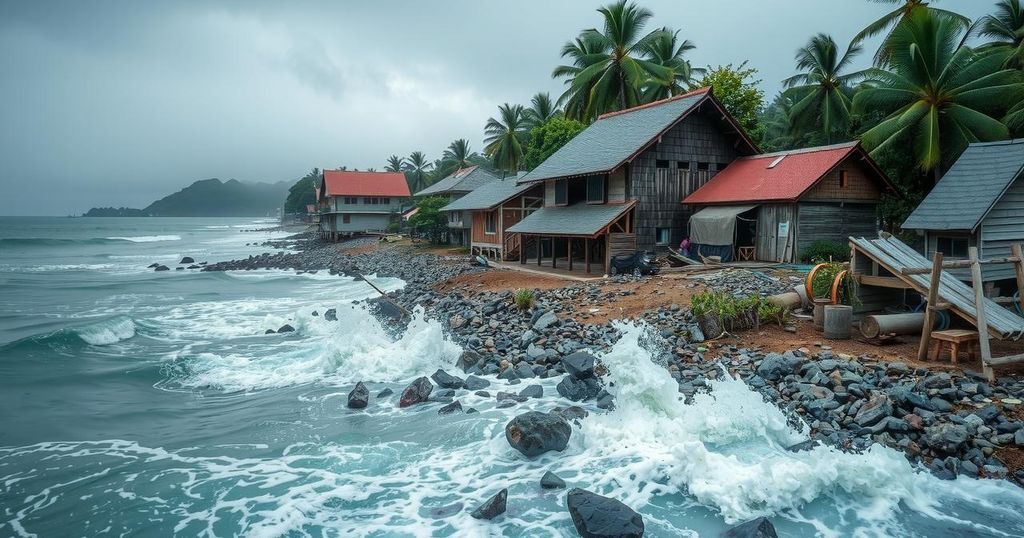Twenty Years Since the Sumatra Earthquake: A Remembrance of the 2004 Tsunami
The December 26, 2004, 9.1-magnitude earthquake off Sumatra caused a colossal tsunami, resulting in over 230,000 deaths and displacing millions across Southeast Asia. Although not the strongest recorded earthquake, its death toll remains the highest associated with such events. The article also highlights other significant earthquakes and discusses the ongoing seismic risks within the Pacific ‘Ring of Fire.’
On December 26, 2004, a devastating 9.1-magnitude earthquake struck off the coast of Sumatra, triggering a catastrophic tsunami that claimed the lives of over 230,000 individuals and displaced approximately 1.7 million across several countries, including Indonesia, Sri Lanka, India, and Thailand. This natural disaster not only obliterated coastal villages, hotels, and resorts but also left a lasting impact on the affected regions. Numerous tourists, unprepared for such a calamity, found themselves witnessing the ocean’s retreat before confronting the tsunami’s ferocious wave. The tragic events that ensued have since become a poignant reminder of nature’s immense power and unpredictability.
Historically, while the Sumatra earthquake was not the strongest recorded, it resulted in the highest number of fatalities associated with an earthquake-triggered tsunami. The Great Chilean Earthquake of May 22, 1960, remains the strongest at a magnitude of 9.5, claiming 1,655 lives, while the Great Alaska Earthquake of March 28, 1964, measured 9.2 and resulted in 128 deaths. In contrast, the Sumatra quake’s toll surpassed any previous disaster in terms of lives lost. Additionally, another tragic event—the January 2010 earthquake in Haiti—was responsible for the most significant overall loss of life, with approximately 316,000 fatalities due to building collapses, rather than tsunami-related destruction.
Each year, the Earth experiences nearly 500,000 detectable earthquakes, with only a small fraction causing significant damage. The majority of these seismic events occur in the Pacific region, known as the ‘Ring of Fire.’ This area is characterized by intense volcanic and seismic activity, resulting from the shifting of tectonic plates. The tragic Sumatra tsunami serves as a vital reminder of the flourishing yet perilous nature of our planet, underscoring the importance of preparedness and resilience in the face of natural disasters.
The article commemorates the tragic events surrounding the December 26, 2004 tsunami generated by the Sumatra earthquake, which became one of the deadliest natural disasters in history. It highlights the sequence of events—from the earthquake itself to the resulting tsunami that affected multiple countries, notably Indonesia, Sri Lanka, India, and Thailand—while also contextualizing the disaster within the framework of other significant earthquakes. By comparing the Sumatra earthquake with the Great Chilean and Great Alaska earthquakes, it emphasizes the catastrophic nature of the tsunami and its far-reaching consequences.
In summary, the December 26, 2004 earthquake off the coast of Sumatra stands as a stark reminder of the destructive potential of nature. With over 230,000 lives lost and millions affected, it illustrates the need for vigilance and preparedness against natural disasters. While the Sumatra earthquake was not the strongest recorded, its death toll is unparalleled due to tsunami impacts, reinforcing the devastating consequences that can emerge from such geological events. The knowledge of seismic activity is crucial for enhancing global resilience in the face of future challenges.
Original Source: arkvalleyvoice.com




Post Comment